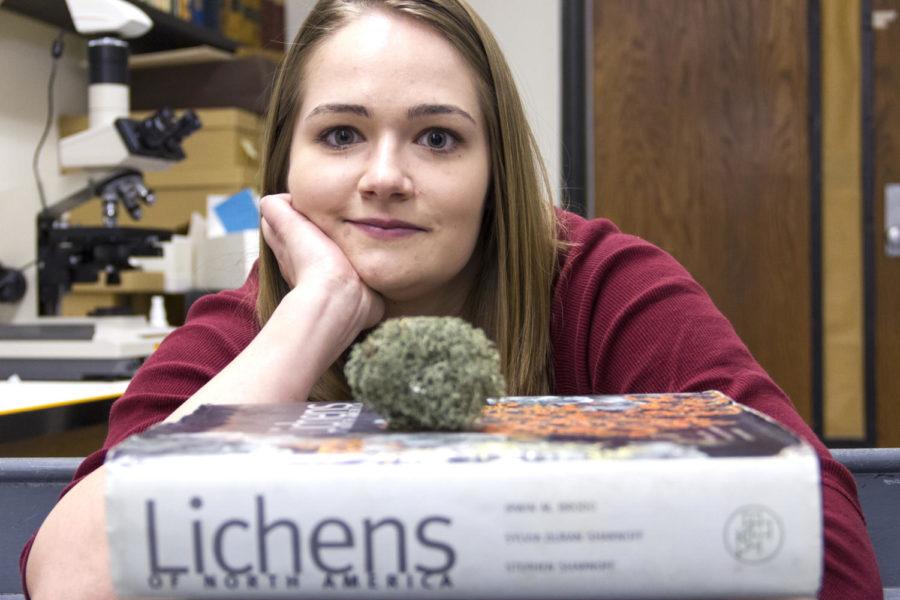Graduate assistant studies Iowa’s lichen population
Photo: Megan Wolff/Iowa State Daily
Amy Podaril, graduate assistant in ecology, evolution and organismal biology, studies lichens in Iowa. She does field work mainly in southeast Iowa at different locations trying to discover all the species of lichens in the state.
March 26, 2013
As students make their way around campus on any given day at Iowa State, there are organisms all around them. Birds, squirrels, people; just about anything they can see.
However, there is another organism that’s all around students that they often don’t notice.
A lichen is a composite organism that is made up of either fungi and an algae or a fungi and cyanobacteria. These two components grow together and develop a symbiotic relationship.
Cyanobacteria are a type of bacteria that use photosynthesis to obtain energy.
There are about 450 known species of lichens in Iowa.
Amy Podaril, a graduate assistant in ecology, evolution and organismal biology, has made it her goal to discover all the species of lichens in Iowa and all of the species that may have once been here.
To put that into perspective, the 450 different species of lichens in Iowa is about the same amount of species of birds that also live in Iowa. It is multiple times larger than the species of mammals and about a quarter of the number of species of flowering plants.
“I’m thinking in terms of conservation, so [the goal is] seeing if anything would need to be added to the Iowa Threatened and Endangered Species List, or just bringing to the public more information about what lichens are and what’s actually here,” Podaril said.
Lichens serve many ecological purposes since they are unable to survive on their own.
Lichens can create a habitat for microorganisms such as insects. Some of the larger lichens can also be used to make nests for certain birds.
Cyanobacteria containing lichens are important to the environment because when they decompose, they release nitrogen into the soil which is essential for the growth of plants.
“[Lichens] are pretty useful in medical research,” Podaril said. “They study a lot of their chemicals for medical use, and more specifically, tumor suppression, cancer and things like that.”
James Colbert, associate professor of ecology, evolution and organismal biology, taught Podaril in one of his biology courses.
Colbert said he is interested in working with rare species of lichens that should be considered for placement on the Iowa Threatened and Endangered Species List.
He also wants to find out if there are any species that were once found in Iowa but no longer are. Colbert calls this extirpation, which means locally extinct.
“Although almost no one ever notices lichens, they’re really fairly diverse,” Colbert said. “They’re a reasonably diverse group of organisms.”







